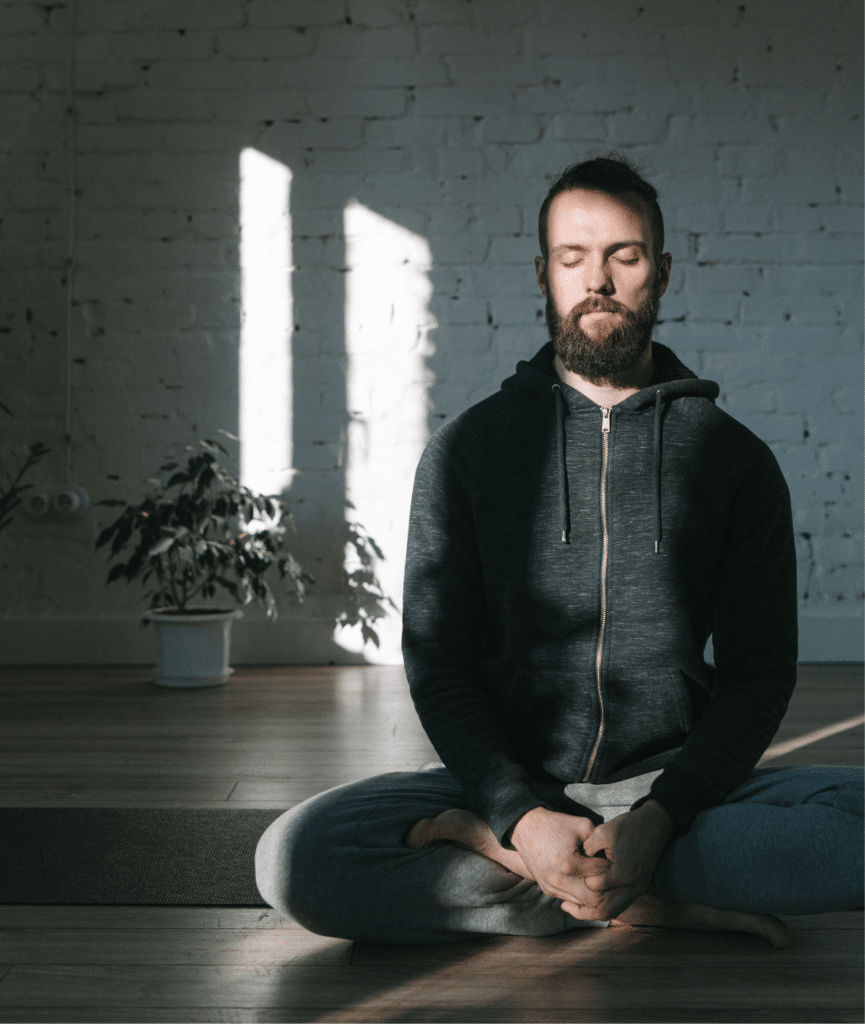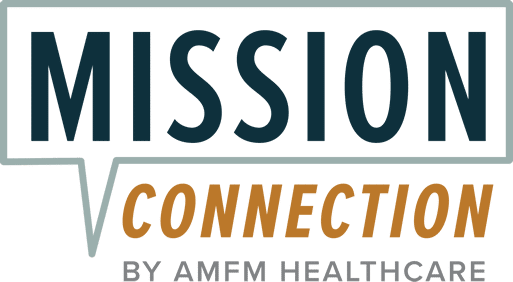Mindfulness and Meditation for Stress Reduction

Stress isn’t always a bad thing.¹ Although, it definitely feels like it at the time. But hear us out.
Some amount of stress is normal as a reaction to challenges that life can sometimes throw up. Our bodies are prompted to release a hormone called adrenaline to make us feel more alert, focused, and driven to solve problems and complete tasks. But when stress starts to get overwhelming and persists for a long time, a condition called “chronic stress,” it can negatively impact our mental, physical, and emotional well-being.
Dealing effectively with stress often requires making lifestyle changes, which the American Psychological Association tells us is something many Americans are struggling to do. While there are likely many reasons for this, part of the reason is because many people simply don’t know how.
On this page, we cover two holistic techniques – mindfulness and meditation, that you can use to calm turbulent emotions and find your zen when you’re feeling far from it. These approaches don’t need any fancy equipment, and you don’t need to invest a lot of time. Best of all – they’re natural and effective.
We will cover:
- What mindfulness and meditation are
- The benefits of mindfulness and meditation for mental health
- 10 mindfulness and meditation techniques for stress relief
- Holistic mental health support options at Mission Connection
- How to get effective mental health support today

What Are Mindfulness and Meditation?
Meditation is a broad umbrella term for a series of different techniques and practices that serve to integrate the mind and body, while helping the meditator achieve a sense of calm and focus.²
Meditation has its roots in ancient Buddhist and Hindu traditions, and while it’s been around for a long time, it’s enjoying a resurgence of sorts, as more and more people experience its benefits.
A meditative practice typically involves the following elements:³
- A single point of focus: You’ll direct your entire focus to any one “thing” which can be an image, an object, a sound, a set of repeated phrases, or your breathing. It can be self-directed or directed by external sources, such as when you listen to a guided meditation with a step-by-step sequence of steps to follow.
- Slowing your breath: This involves gradually slowing down your breathing to measured, deep intakes and outtakes, increasing your oxygen consumption while relaxing your muscles in the process.
- A peaceful and quiet setting: Meditation is usually carried out in a space that’s conducive to achieving calm. Places like a quiet bedroom or even a restful space in your garden with the trees overhead can be ideal.
- A position of grace: Think of this as assuming a relaxed and comfortable position with the least resistance and distraction. The easiest is to lie down, but you can achieve a great meditation practice by sitting on a chair with your back resting flat against the backrest too.
- An open mind: Having an open mind simply means allowing without resistance. So, when an image from work arises, you observe it and allow it to float away without holding on to it or trying to attach a meaning to it.
There are several types of meditative practices, for example, visualization meditation involves visualizing images in your mind’s eye as a means to achieve calm single-pointed focus. Moving Meditation, on the other hand, incorporates some form of movement as part of the meditation. Yoga and Qigong are two specific examples of moving meditation.
You may have experienced a type of meditation called progressive muscle relaxation (or PMR) if you’ve ever been to a therapist’s office. In PMR, you focus on specific muscles in sequence from the top of your head to your feet, tense, and release them. But more on this soon.⁴
Mindfulness is another type of meditative practice.
How is Mindfulness Different From Meditation?
The American Psychological Association (APA), defines mindfulness as a psychological state of awareness, or to be more specific, a “moment-to-moment awareness of one’s experience without judgment.”⁵
In other words, mindfulness is a state of being. It’s the exact opposite of, say, rushing through your daily schedule without ever fully engaging in whatever it is you’re doing, because there’s a million other things going through your brain.
According to Buddhist philosophy, happiness can be attained by the acceptance and wholehearted immersion of self with reality, and focusing on the present.⁵
Meditation can enhance your mindfulness, which is a psychological state. Meditation, on the other hand, is a practice.
Benefits of Mindfulness and Meditation for Mental Health
Mindfulness and meditation offer multiple benefits that go beyond just stress reduction.
Consistent meditative practices are seen to produce higher levels of mindfulness, compassion, and a sense of well-being. They have also been seen to reduce some of the symptoms associated with mental health disorders, such as difficulties managing and regulating thoughts and emotions.⁶
Studies show the regular practice of such exercises can benefit the management of symptoms associated with anxiety, depression, and PTSD. It’s important to note that the benefits are associated with a regular and consistent meditation/mindfulness practice.
Anxiety, depression, sleep: Research indicates that meditative practices can reduce symptoms of anxiety and self-harm behaviors associated with Major Depressive Disorder (MDD) while helping improve sleep, focus, and moods.7,8
- Post-traumatic stress disorder (PTSD): Meditation is shown to alleviate symptoms of trauma (post-therapy) seen in clients with post-traumatic stress disorder.⁹
- Loneliness: Meditative practices are seen to build compassion and acceptance of oneself and others, which in turn benefits in building social relationships. Having positive social interactions can ease loneliness, and increase a sense of mental well-being.10
- Cognitive difficulties: Mindfulness has shown benefits in reducing rumination (persistent negative thinking) in clients with depression, increasing working memory capacity, improving focus, reducing emotional reactivity, and increasing resilience and adaptability to potentially stressful situations.11,12
But what about mindfulness and meditation to solve the specific challenge of stress?
Mindfulness for stress reduction
: A consistent and regular mindfulness practice has been linked to improvements in attention, internal and external awareness, and emotional control. Regular meditators report lower perceived stress and an increased sense of emotional well-being.¹³- Stress management with meditation: According to research, meditation helps decrease stress by mediating various psychological processes. Because it increases acceptance and reduces the tendency to react impulsively, meditation has been associated with an improved ability to regulate thoughts and emotions.14
10 Best Mindfulness and Meditation Techniques for Stress Relief
Here are ten practical and easily doable techniques you can use to manage stress and create calm and clarity in your everyday life.
1. Mindful Breathing
Start with five to ten minutes for the entire practice, if you’re a beginner.
2. Body Scan Meditation
Close your eyes and rest in a comfortable position. Slowly bring your awareness to each part of your body from head to toe. Allow yourself to dwell on each part. Notice the sensations and experience them without judgment. If you find your attention drifting, slowly direct your focus back to the body part you’re attending to.
Look online for guided body scan meditations that you can play along in the background to get comfortable with and learn the practice.
3. Taking a Mindful Stroll
Set a timer for this outdoor walking exercise for up to 10 or 15 minutes. Put on a comfortable pair of shoes. Check in with your body. How are you feeling? The idea is to observe and experience without judgment and to intentionally bring this awareness into your daily life.
Start your walk and as you’re walking, start to observe what’s going on around you – the images, the sounds, the sensations in your body. Focus on your breath as you’re doing all of this. Repeat daily.
4. Observe an Object Exercise
Try an easily-held object from nature for this exercise, like a leaf. Hold a leaf in the palm of one hand. For a total of five minutes (use a timer if you need to), observe everything you can about the leaf without judgment. If you experience random thoughts and emotions, bring your focus back to the leaf. Look at the shape of the leaf, its color, the edges, and any folds and tears.
5. Gratitude Journaling
Do this exercise either first thing in the morning, or last thing at night before you sleep. Keep one journal with you only for the purpose of jotting down everything you’re grateful for. Take 10 minutes every day to record and experience the positive emotions that come from gratitude for all the things that are going great in your life.
6. Abdominal Breathing
Abdominal breathing is a great way to relieve stress and anxiety. When you breathe deeply through your abdomen, it can inspire profound feelings of calm and relaxation. Simply lie down in a comfortable position. Place one palm on your chest and the other on your ribcage. Breathe deeply through your nose and experience your palms rising. Tense your muscles on the exhale and release on the inhale. With practice, you’ll find it easy to slip into a relaxed state of mind when you do the exercise.
7. The Blank Screen Visualization Exercise
If this feels safe for you, imagine a blank white wall in your mind. Focus all your attention on this white wall for the duration of the exercise, whether it’s five minutes or fifteen. Anytime a thought or emotion arises on your white wall, imagine you have an eraser in your hand which you can use to wipe it away. Rinse and repeat. Remember to breathe deeply as you do this visualization exercise.
8. Mindful Eating
Mindfulness meditation can be practiced in everything you do, including eating. Every time you sit down to eat, focus on the tastes, smells, and textures. Savor each moment. Breathe deeply as you’re doing it. Pay attention to when your body is telling you it’s full, so you know when to stop eating.
9. Progressive Muscle Relaxation
PMR is best practiced as a guided mindfulness meditation technique. Simply find an audio or YouTube version online that you can follow along with. The technique involves you bringing your attention to different muscles in your body and then tensing and releasing them. As you’re doing this, you’ll start to progressively relax and feel calmer and more centered.
10. The One Task at a Time Exercise
The one task at a time exercise helps you practically apply your mindfulness as you’re going about your daily routine. It involves you focusing wholeheartedly on the one task you’re doing in this present moment. You’ll put your phone on silent, remove any other distractions, and inform your family or coworkers you don’t want to be disturbed.
Regular practice of this exercise will help you get better at doing one thing at a time and doing it in a way that you start to actually enjoy it. When you’re doing multiple things at the same time, it can impact your productivity, and you won’t necessarily feel as satisfied or fulfilled.
Holistic Support Options at Mission Connection
At Mission Connection, we believe that you’re more than a symptom that needs to be “managed.” We recognize you as an individual who deserves unique and customized healing interventions with compassionate health practitioners to achieve sustainable recovery.
That’s why we offer holistic support options that are evidence-based in addition to our traditional psychotherapeutic interventions, including CBT, trauma therapy, EMDR, and medication, where required. We believe true healing can occur only when we integrate the mind, body, and spirit connection in our approaches.
- Mindfulness therapy: Our trained therapists incorporate mindfulness strategies into counseling sessions to help you manage various mental health challenges, including stress, anxiety, and depression. Mindfulness therapy can also boost your overall sense of well-being, self-esteem, emotional resilience, and relationships with others.
- Meditation training: We offer well-thought-out resources and training to help you ease seamlessly into a daily meditation practice. A daily meditation routine can help bring calm, clarity, and focus into your everyday life.
- Nutritional counseling: Nutritional wellness is key to a healthy mind. Our interventions also provide nutritional support so you can build healthy eating habits that nourish your mind.
- Music, art, and writing therapy: We use evidence-based techniques that integrate music, art, and writing therapy as a means to improve symptoms of depression, reduce stress, and enhance your overall sense of well-being.
- Lifestyle coaching: Our therapists will work one-on-one with you to identify and leverage your strengths, set realistic goals for your future, and develop skills to effectively overcome and manage challenges that life can sometimes throw up. We help you build self-esteem, confidence, and resilience in the process.
Get Effective Mental Health Support Today
At Mission Connection, your story matters. Whether you’re dealing with debilitating long-term stress, or you’re looking for help coping with everyday challenges, we provide evidence-based approaches that can help.
We offer flexible, customized treatment plans, both onsite and online, that cater to your unique needs and meet you where you are in your healing journey. We’re there with you every step of the way from the moment we consult to the end of your journey when you’re ready to integrate into your normal life.
Ready to take the first step to hope and recovery? Simply fill in our pre-assessment form, complete a self-assessment, schedule your consultation, or call us directly at 866-758-4410.
We’re here to help as your trusted partner and confidant.

References
- American Psychological Association. (2019, October 25). Stress won’t go away? Maybe you are suffering from chronic stress. https://www.apa.org/topics/stress/chronic
- National Center for Complementary and Integrative Health. (n.d.). Meditation and mindfulness: Effectiveness and safety. https://www.nccih.nih.gov/health/meditation-and-mindfulness-effectiveness-and-safety
- Mayo Clinic. (2022, April 29). A beginner’s guide to meditation. https://www.mayoclinic.org/tests-procedures/meditation/in-depth/meditation/art-20045858
- U.S. Department of Veterans Affairs. (n.d.). Progressive muscle relaxation. https://www.va.gov/WHOLEHEALTHLIBRARY/tools/progressive-muscle-relaxation.asp
- American Psychological Association. (n.d.). What are the benefits of mindfulness? Monitor on Psychology. https://www.apa.org/monitor/2012/07-08/ce-corner
- Sharma, R. (2023). Meditation and its mental and physical health benefits in 2023. Peer-reviewed article. National Library of Medicine. https://pmc.ncbi.nlm.nih.gov/articles/PMC10355843/
- Hofmann, S. G., Sawyer, A. T., Witt, A. A., & Oh, D. (2010). The effect of mindfulness-based therapy on anxiety and depression: A meta-analytic review. Journal of Consulting and Clinical Psychology, 78(2), 169–183. https://pmc.ncbi.nlm.nih.gov/articles/PMC2848393/
- Zhang, B., Fu, W., Guo, Y., Chen, Y., Jiang, C., Li, X., & He, K. (2022). Effectiveness of mindfulness-based cognitive therapy against suicidal ideation in patients with depression: A systematic review and meta-analysis. Journal of Affective Disorders, 319, 655-662. https://doi.org/10.1016/j.jad.2022.09.091
- National Center for PTSD. (n.d.). Meditation-based approaches in the treatment of PTSD. U.S. Department of Veterans Affairs. https://www.ptsd.va.gov/publications/rq_docs/V28N2.pdf
- Cureus. (2023, June 19). Meditation and its mental and physical health benefits in 2023. The Cureus Journal of Medical Science. https://www.cureus.com/articles/156473-meditation-and-its-mental-and-physical-health-benefits-in-2023#!/
- Comprehensive Psychoneuroendocrinology Volume 6, May 2021, 100037. (n.d.). Psychobiological mechanisms underlying the mood benefits of meditation: A narrative review. https://www.sciencedirect.com/science/article/pii/S2666497621000114
- American Psychological Association. (n.d.). What are the benefits of mindfulness? https://www.apa.org/monitor/2012/07-08/ce-corner
- Keng, S.-L., Smoski, M. J., & Robins, C. J. (2011). Effects of mindfulness on psychological health: A review of empirical studies. Clinical Psychology Review, 31(6), 1041–1056. https://pmc.ncbi.nlm.nih.gov/articles/PMC3679190/
- Pascoe, M. C., de Manincor, M., Tseberja, J., Hallgren, M., Baldwin, P. A., & Parker, A. G. (2021). Psychobiological mechanisms underlying the mood benefits of meditation: A narrative review. Current Research in Behavioral Sciences, 2, 100011. https://www.sciencedirect.com/science/article/pii/S2666497621000114
- National Institutes of Health. (2022, July 15). Mindfulness for your health. NIH News in Health. https://newsinhealth.nih.gov/2021/06/mindfulness-your-health
